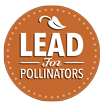From our survey in May of this year, 77% of association leaders will still offer virtual attendance to their members for their continuing education. When providing speakers for local meetings, and state and national education 66% of leaders said they would offer virtual speakers to save travel costs for speakers, 55% to reduce the climate impact caused by speaker travel, 88% to expand the educational opportunities to members and groups, and 77% of leaders will welcome virtual speaker participation to meet the safety and health concerns of speakers. The survey response most telling concerned feeling safe to return to large event activities:
What size event will you feel comfortable attending in person?
76% 10-25 people
23% 26-60 people
1% 61-100 people
0% 101-250 people
0% 251-500 people
0% 500+ people
Successful leaders need to adopt a “new normal.” That new normal includes the opportunities many groups discovered in being able to provide national and international speakers to their members. Many groups welcomed members from outside their county and state due to the caliber of speakers the group sponsored. Educators are not limited to just our county, state, region, or country. With virtual options local, state, and national events can provide high caliber speakers from across the country, and the globe, and reduce our carbon footprint at the same time. The speaker, as well as the conference attendees, health, travel risks and constraints must be recognized. At the time of this writing Canada still has restrictions on US travelers to Canada. Not until August 9th does the 3 night hotel “quarantine” cease.
In a survey of event planners by Encore they found “more than one-third of planners have adopted a hybrid approach in the past six months and nearly 60% plan to use hybrid going forward,” for their events and association education.
Organizations will decide to participate on-site at events on a per case basis. Business owners who have been vendors in the past have to weigh the health risks to their employees who work a vendor table: Are the vaccine rates low in a state, is the event indoors, are masks required or not required, how comfortable do the staff feel attending the event, etc. The return on investment from an exhibit table or vendor table at an event has always been determined by the financial return on investment (ROI), but now the ROI also includes health costs to the staff or volunteers.
The Organization for Economic Co-Operation and Development surveyed national and international insurance carriers highlighted at the beginning of the pandemic that “ . . .few companies have business interruption coverage that is likely to respond . . . exposing the existence of an important protection gap for some pandemic-related business interruption losses.”
According to Economics Observatory, “The multi-faceted nature of the Covid-19 pandemic has meant that it has affected many lines of business where there is insurance coverage. The affected areas include, but are not limited to, business interruption (for example, disruption to supply chains and inability to operate as normal due to government measures), trade credit insurance (cover for businesses if customers who owe money for products or services delay payment or do not pay at all), travel, cyber liability (due to increased working from home) and event cancellation.”
Very few state and national groups even secure event insurance, and of course never thought they would have to cancel an event, even due to weather. With climate change, impacts to events, and the subsequent vendor and exhibit tables, registration fees, and venue deposits and costs, will be at risk. For the future, an event must place insurance as part of their conference expense.
The negative media coverage resulting in mass illnesses, whether from food, the “basic” flu, or Covid-19 will cause years of damage to an event. See these two articles about an event, and a community group that became “super spreader events” even with precautions.
Poor service by a conference venue, such that the mention of the city causes others to also groan with dissatisfaction and bad memories, haunts many an event. Bad memories linger in attendees, speakers, and exhibitors. Add to that a low vaccine rate, and the looming winter flu season, and event planners are setting themselves up for a highly problematic experience for all. If your event becomes a super-spreader event, no events for the industry will ever be held in that city in organizational memory after that.
Humbled and pained’: Calif. tech exec’s indoor conference becomes COVID superspreader
After Its Superspreader Rehearsal, A Community Choir Struggles To Sing Together Again
Association Now offers four tips for event:
“It all starts with safety protocols. Even as the risk of contracting COVID-19 decreases, attendees remain cautious. They expect cleanliness and social distancing protocols to be in place and want to be reassured that the locations where they’re staying and meeting are adhering to them.
Secondly, the pandemic has made teleconferencing the norm. Attendees have become more comfortable with that experience, and some may even prefer it–after all, it’s more convenient and less expensive than traveling. Coupled with the fact that there are still many people who don’t feel safe attending meetings in person, offering both options–to attend in-person and via teleconference–is a smart strategy. This hybrid offering is now part of a new normal that attendees both expect and appreciate.
Third, outdoor spaces are now preferable for meetings, so destinations with open-air offerings have a leg up. This goes for all gathering places, from facilities to after-hours venues. Being able to offer that fresh air is sure to increase attendance, help attendees feel safer and enjoy themselves more.
Lastly, now more than ever, events need to offer something new and unique. There needs to be a hook or some wow factor because there are still many people on the fence about attending in-person events.” Moreover, events with experiences that are more effective in person, such as teambuilding excursions that build motivation and camaraderie in a way that teleconferencing can’t, are sure to lure more attendees and have a bigger impact.”
Even as vaccination rates rise, health concerns and safety protocols will continue to be important for many event attendees. Washing of hands, and hand cleanliness should continue to be promoted in large groups. Having more physical space in which humans can interact is healthier over-all. Vendor areas that are human traffic jams should have been, and are unhealthy and unsafe for the attendees and the vendors. Food service buffets have raised health concerns for decades. If the event is health conscious the attendees will value it, and be willing to pay more for an event that implements health standards for every aspect of the event.
Joanne Brooks of Successful Meetings Start Here offers “Top tips for reducing contagion and keeping attendees safe at face-to-face meetings,”
- “Negotiate a flexible cancellation policy with the venue, in case local levels of Covid-19 are high and it is unsafe to hold the event. You will need to determine how much of a refund will be provided and how close to the event date it will be offered.
- Require attendees to complete temperature checks and show proof of vaccination or provide a negative Covid-19 test result. Covid-19 sniffing dogs, which have been used at airports and some events, are another option.
- Make sure that the event staff, speakers and vendors have also been tested or vaccinated. Provide a separate set-up area just for the staff to reduce contact.
- Consider closing the meeting rooms for 30 minutes between sessions for proper cleaning and disinfection. Be sure to sanitize all microphones and equipment between speakers.
- Make air-flow adjustments, such as opening windows and using ozone air purifiers, to minimize the risk of contagion.
- Use digital scanners for contactless registration. It’s also a good idea to invest in contact-tracing technology, so you are prepared in case there are any outbreaks on site.
- Add one-way aisles and schedule visiting times for the exhibit hall to control traffic.
- Implement a no-handshake policy and use digital business cards, so attendees can safely exchange contact information.
- Use server-attended stations and staggered meal times to avoid crowding and create a safe food and beverage experience. You can also offer to-go containers, so attendees can eat in their rooms if they are more comfortable doing so.”
Leaders providing member association education will ensure the longevity of their local, state, and national association only if they embrace the “new normal.” Take your feedback from your audience and make the changes to protect, educate, inspire, and grow your audience.

